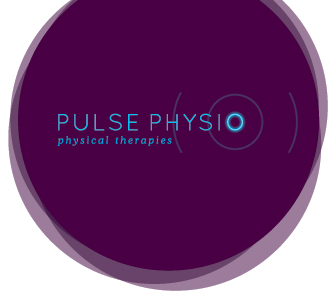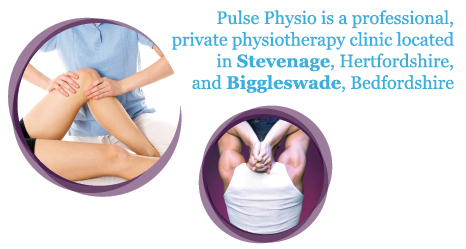Case Study One:
Failure to diagnose costovertebral joint pathology in musculoskeletal medicine. |
This case study deals with a young social worker whom, whilst at university, developed severe back and chest symptoms. She was repeatedly misdiagnosed by multiple
health care professionals until she attended my clinic and she was successfully managed in just 3 sessions. I have chosen this as a case study because it highlights
the lack of knowledge health care professionals have regarding the thoracic spine (middle area of the back) and the costovertebral (rib) joints, repeatedly failing to
identify the cause of this patients pain. This is a problem that has been highlighted in the medical scientific literature many times, as it still appears to be a
subject professional are naive to, I have reiterated the importance of examining these structures here.
I have tried to discuss this case study below in a lay persons language for ease of reading. Musculoskeletal medicine is a very complex subject however. Where
technical terms are used I have clarified the meaning in brackets.
|
History of present condition:
This 25 year old lady presented with a 3 year history mid-back and chest pain. She described the onset as sudden with no history in change in lifestyle or trauma.
She was a student at university at this time but she could not recall specifically what she had been doing at the time her symptoms started. She reported she attended
A&E suffering with severe anxiety regarding her symptoms and difficulty breathing due too pain. She was given medications for her symptoms which she reported did not
help. She was referred for a course of physiotherapy which she reported worsened her symptoms. No diagnosis or explanation was given for her symptoms and she was
advised to perform active straight leg raise exercises. She reported that this exercise was the main cause of aggravated symptoms. She discontinued physiotherapy and
saw a chiropractor. No diagnosis or explanation was made regarding her ongoing symptoms once again. Treatment involved forceful manipulations of the spine which she
reported provided some short term relief but overall her symptoms remained unchanged. Later, in October 2014 she visited an Orthopaedic Consultant, who, unable to
explain her ongoing symptoms
organised a spinal MRI which was normal, showing no abnormalities. She was then referred to an Extended Scope Practitioner (a physiotherapist with specialist training,
able to organise scans and tests, or make referrals to other health care professionals, as seems necessary) who provided information and advice on managing her symptoms,
rather than finding a solution. The patient found this useful as it gave her a way off managing the problem, but this did not change her symptoms in any way.
|
Symptoms:
Her symptoms were described as a constant throbbing pain with occasional stabbing pains. When aggravated they were rated as 10/10, but on average her symptoms were
2/10, settling in one day. She reported she could experience severe nausea at times. She reported she experienced no neurological symptoms (this may include numb
areas or pins and needles). Aggravating factors included stress mainly but sometimes exercise could provoke her symptoms. Her symptoms were eased by stretching or
curving her back, i.e. knees-to-chest, and cold packs.
|
Social history:
She worked as a social worker which she reported did not appear to aggravate her symptoms.
Hobbies included regularly attending the gym and swimming. Both of these activities could be performed normally without obvious aggravation of her symptoms although
on some occasions symptoms would worsen after exercise (infrequently).
|
Impression:
This is a very interesting case. She had seen more than one doctor, a physiotherapist and a chiropractor, an orthopaedic consultant and an extended scope practitioner, none of whom were able to provide her with a diagnosis or explanation for her ongoing symptoms. She had reached a point where she was being pointed towards pain management strategies.
Also interesting is her ability to exercise frequently and vigorously without any obvious aggravation. This might indicate that her symptoms are not mechanical,
however, symptoms are eased by curving her back and she can experience nausea. These are vital clues which point to a potential cause which may tolerate exercise,
fail to respond to manipulation and be aggravated by active straight leg raises, which are very strenuous for the spine. My hypothesis was that the thoracic
(mid-back) joints would be normal but the costovertebral joints (the joints or articulations between the ribs and the spine/vertebra) would be restricted at the
symptomatic area.
|
The costovertebral joints:
The joints are the articulations between the ribs and the spine. Ribs must move as we move. If they do not move properly this can irritate them as they may jar or strain
with activity. Or, this movement restriction may irritate the nerves that sit around them. The latter appears to be the case in this instance. The sympathetic trunks
are bundles of nerves sitting closely under these joints. They supply blood vessels, sweat glands, the pupils of the eyes. Nerves are very mobile structures, when there
mobility is restricted they can produce pain without any other associated nerve symptoms (such as tingling or numbness). In this case the discomfort followed the ribs
around to the chest. These nerves can also produce quite unusual symptoms and, since they supply the gut, they can produce nausea. They are usually irritated with
activities where the arms are held out in front of the body for prolonged periods (she was a university student, probably working hard at a computer frequently).
|
Objective assessment:
Thoracic (mid-back) spinal joints exhibited normal function. The costovertebral (rib) joints however demonstrated reduced movement as anticipated. Since symptoms could
be severe and still elicited a degree of anxiety for the patient, the assessment was kept as brief as this and the first treatment session was commenced.
|
Diagnosis:
Costovertebral (Rib) joint dysfunction with secondary irritation of the Sympathetic Trunks (nerves) +/- peripheral nerve irritation also.
|
Treatment One:
This highlights the importance of specific mobility intervention on spinal joints. Despite her being a very
active lady, these joints had remained restricted. The goal of treatment was to improve the joint function and relieve the irritation on neural structures underneath.
The relevant, stiff joints were gently (low pressure) mobilised for 2 x 1 minutes. This resulted in nearly normalising movement in all joints except one. Her symptoms,
at that time, remained unchanged. She was given no home exercise program due to the nature of her problem. It was inappropriate at this time.
|
Treatment session two:
She reported severe aggravation of her symptoms which started 2 days after our session but took several days to settle. On reassessment joint mobility had improved mildly.
Treatment was not progressed for obvious reasons and remained the same as for session one. During the session she reported a sensation of mild nausea. She also reported
that the treatment felt "right". At the end of the session all joints were moving/functioning normally.
This treatment session provides useful information regarding her problem. Firstly we appear to be in the right place, we can now establish a link to the structures and her
nausea, and the fact that she perceives the treatment to be "right" is very encouraging (this is usually a good sign). The same treatment today has provided a better
outcome (all joints function) which tells us that we are getting closer to our goal (we are progressing). It is still inappropriate to add a home exercise program.
|
Treatment session three:
She reported suffering no aggravation of her symptoms after the last session, indicating she is improving as the area tolerates intervention better. She reported no real
problems in terms of her symptoms but she is unsure if she has genuinely improved as she reports she can have periods like this. On re-assessment the left and right 8th
costovertebral joints remain stiff, otherwise above and below show normal function/mobility. These joints are mobilised once again with no reproduction of nausea this time.
Normal function is again restored. It is now appropriate to add neural (nerve) mobilising exercises to encourage better function of the nervous system through this area
(nerves are very mobile structures normally). A "sympathetic slump neural tensioner" exercise is taught and performed. This is an exercise specifically designed to
improve mobility and function of the sympathetic nerves.
|
Treatment session four:
She reports she is now pain free which makes her feel "excited" as she has not felt like this for 3 years. She has normal function of the mid-thoracic area with no
restrictions to the thoracic and costovertebral structures, and presumably the underlying neural structures also. |
Pulse Physio Home |
|
| |

